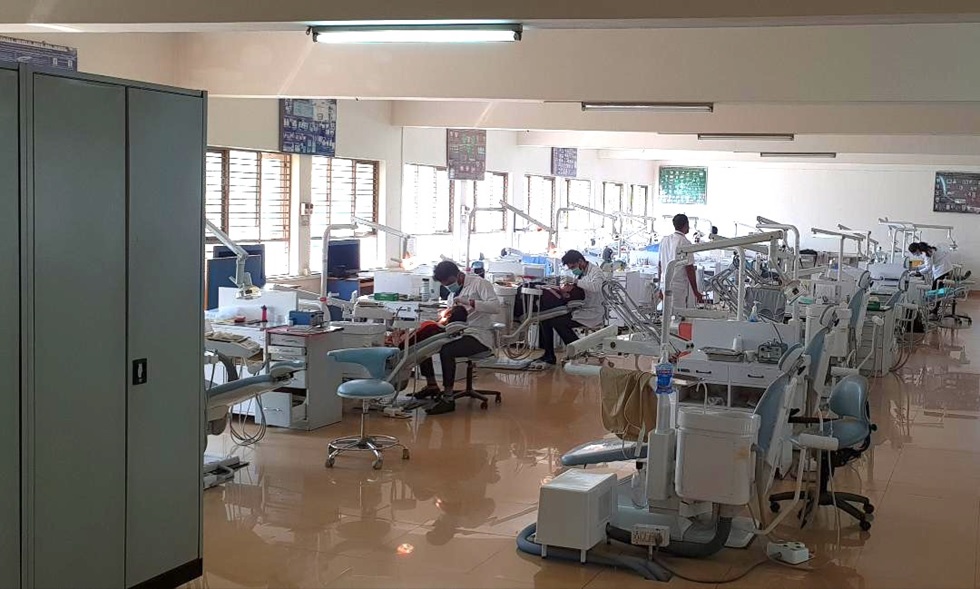Infrastructure








Orthodontics is the branch of dentistry which is concerned with facial growth with development of dentition and occlusion it involves diagnosis, prevention, interception, and treatment of occlusal anomalies, abnormalities of dentofacial region.
Dentofacial orthopedics references to area of dentistry concerned with supervision, guidance's, and correction of growing and mature dentofacial structures including movement of teeth / correction of relationship & malformations among teeth and facial bones by application of forces, stimulation and redirection of functional forces within the craniofacial complex
Watch on YoutubeFunctional Efficiency : The form and function are interrelated. any deviation from normal occlusion(malocclusion) may adversely affect normal function carried out by oral cavity. one of the main aims of orthodontic treatment is to improve functional efficiency. poor dental occlusion could be a handicap to function.
Structural Balance : Orthodontic treatment aims to maintain a balance between stomatognathic which includes periodontal ligament surrounding musculature and associated skeletal structures (basal bone and TMJ).
Esthetic Harmony : Majority of individuals seek orthodontic treatment to improve the appearance of the smile and face. orthodontic treatment aims at improving the overall esthetic appeal of the individual.
Preventive orthodontics (Primary Prevention) : Preventive orthodontics includes action taken to preserve the integrity of what appears to be the normal occlusion at a specific time. Includes procedure taken prior to onset of malocclusion in anticipation of a developing malocclusion. Procedures include:
Interceptive Prevention (Secondary Prevention): Includes procedure undertaken at an early stage of malocclusion to reduce the severity of the same. This stage differs from preventive orthodontics in that here already malocclusion sets in. Procedures include:
Corrective Orthodontics: Orthodontic procedures undertaken to correct a fully established malocclusion. Procedures include:
Surgical Orthodontics: They are surgical procedure undertaken in conjunction with or as an adjunct to orthodontic treatment. Procedures include:
Adjunctive Orthodontic Treatment in Adults: will involve repositioning teeth that have drifted after extraction so that a more ideal fixed or removable partial denture can be fabricated or to facilitate implant placement. Alignment of anterior teeth to allow more esthetic restorations. Correction of cross bite if this compromises jaw function. Forced eruption of badly broken-down teeth to expose sound tooth structure to facilitate placement of crowns.
Surgical Orthodontics:For patients whose orthodontic problems are so severe that neither growth modification nor camouflage offer a solution, surgery to realign the jaws or reposition dentoalveolar segments is the only possible treatment. Depending on the jaw involved appropriate surgery is performed to achieve a more harmonious and aesthetic results. Steps involved are:
Temporary anchorage devices (TAD): To enhance the quality of treatment outcome and induce tooth movements such as intrusion of molars and vertical control on buccal segments, which were not possible with conventional mechanics where made possible with TAD. Implants were considered immobile in the bone and hence could serve us a source of absolute anchorage. Temporary anchorage devices are relatively new armamentarium in clinical orthodontic practice. The field is exciting both for the possibilities of TAD devices and for clinical potential they have to offer.
Surgically facilitated rapid tooth movement (SF-RTM): The technique in the SF-RTM involves selective decortications of the alveolar bone in desired tooth movement. They primarily focus on weakening the cortical bone –tooth interface. The corticotomies appear to supercharge additional orthodontic treatment by inducing a state of increased turnover and transient osteopenia, followed by a faster rate of orthodontic tooth movement. This technique is done in
Psychological implications of malocclusion and orthodontic treatment): Malocclusion may become a big social handicap, as the affected individual may find it very difficult to smile, talk in public or interact with people. Facial appearance may have important implications in job opportunities, with attractive faces having an edge over the less attractive ones. The other psychological reasons can be low esteem and maladjustment, restriction of social activities, adverse occupational outcome.









There are times when conventional orthodontic solutions cannot successfully treat a skeletal jaw problem. Severe malocclusion may require surgical treatment particularly if it is causing functional problems such as speech difficulties, inability to properly chew food and facial dysfunction . Self-esteem issues brought about by jaw abnormalities may also necessitate the need for surgery. This centre includes a multidisciplinary team, of an Orthodontist and Maxillofacial surgeon to produce the best possible results for the patients.
When the jaws do not line up properly and cause functional and aesthetic problems for the patient, orthognathic surgery may be needed to move the jaw and teeth into their correct position.
For many of the patients, the best reward of having orthodontic surgery is a healthy and beautiful smile. This has the added benefit of giving patients a serious confidence boost. It can also greatly improve patients’ quality of life by improving facial aesthetics, structural balance and functional efficiency.